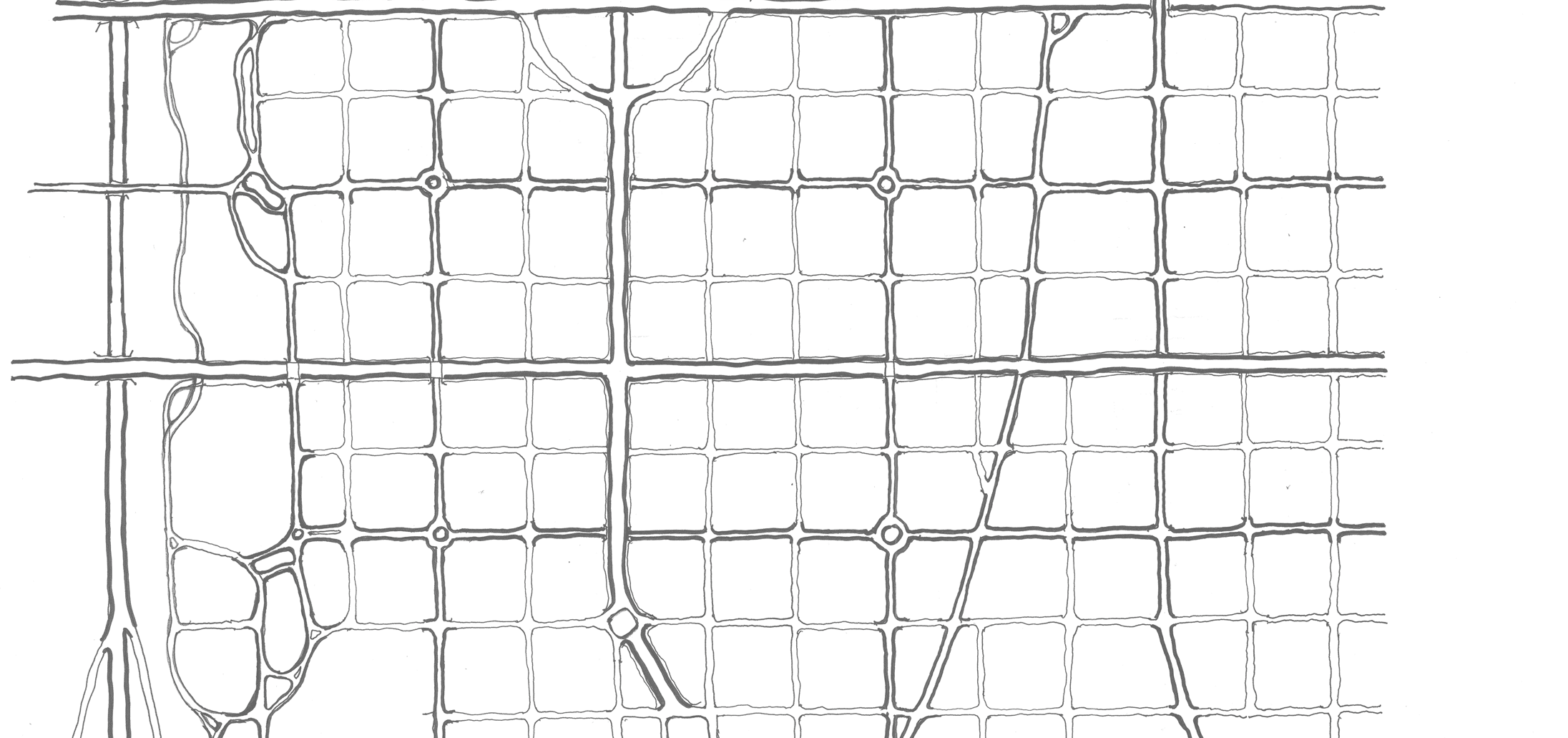About the Academy Session
The most recent Renaissance Academy session centered around designing in context and gave an in-depth look and how context plays an important role in place-based design. The session was led by Kathy Galvin, FAIA, whose background in architecture and place-based planning gave a unique perspective to the contextual nature of the discussion. With over three decades of experience, Kathy deftly captured the importance of context in design, and how we can apply this place based thinking at a larger scale.
Designing with Scale in Mind
Urban design sketch showing building form and urban spaces at the micro scale.
The session looked at design holistically, and identified three key scales that we as designers of urban spaces should consider:
Macro
Meso
Micro
At the broadest level, the macro scale takes a regional view of an area, zooming out to consider major transportation corridors and the land use in cities/towns. The meso scale zooms in slightly to the level of districts, neighborhoods, and even city blocks to help examine the organization of city centers and communities. The micro scale zooms in even further to look at building form, street design, sidewalks, and placemaking at the human level.
These relationships between the macro, meso, and micro scales are where many designs fail. Designs might work at a macro level, but when you get down to the micro level of the people that use the spaces, there could be conflicts. Looking at these three scales together and applying a contextual design methodology to consider the various challenges and opportunities at each scale, designers can create places that are beautiful yet functional at all scales.
It was interesting to see how design is applied to the macro, meso, and micro scales, and how at Renaissance our integrated planning approach looks at all these different scales to produce holistic designs and create cities that work. Looking forward to the next Renaissance Academy!


